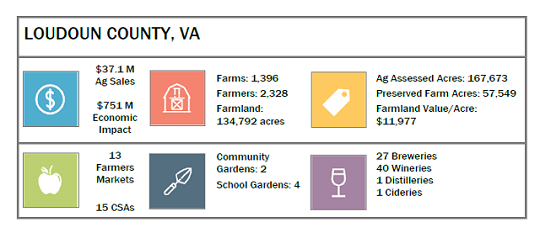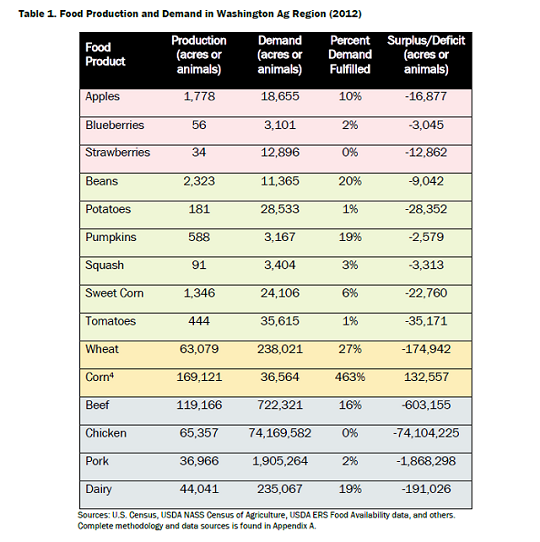A new report from the Metropolitan Washington Council of Governments (COG) reveals the important contributions of agriculture to regional job and economic growth, but pinpoints many challenges for the sector.
The comprehensive report from COG’s Regional Agricultural Work Group, What Our Region Grows, analyzes data from the U.S. Census of Agriculture for local jurisdictions across metropolitan Washington. It tracks changes in the farming landscape—including farmland, farmer demographics, and food production.
One focus of this edition is the region’s urban farms and the economic and environmental benefits that healthy agricultural soils provide, like improved water quality.
In addition, a “Local Agriculture” section contains federal, state, and new locally collected data on food and farming for the District of Columbia and 10 counties in the region.

According to the report, the area economic impacts of agriculture total $15.8 B in Maryland, $70 B in Virginia, and $5.5 B (food and agriculture) in the District of Columbia. More than 480,000 people are employed by the sector across the three jurisdictions.
Despite the region’s growing demand for food, agriculture faces significant challenges. Nationally, and in the region, the number of farmers, farms, and farmland acres has declined since World War II. In 1945, there were 32,455 farms in the region; just 12,000 farms remain today. Farmland has declined by 2 million acres or 57 percent since 1945.
Production declines and population growth have reduced the region’s ability to rely on itself to produce its own food. The production of many commonly eaten foods declined between 30 percent and 80 percent over a 10-year period. This includes livestock—the number of chicken, hogs, beef, and dairy cows declined by between 34 percent and 76 percent from 1997 to 2012. The dairy sector has been particularly hard hit, with many regional repercussions.

In the face of these changes, metropolitan Washington farmers and business owners are turning to innovative methods for keeping land in agriculture.
Farm businesses that connect directly with residents and consumers or provide agritourism experiences will be key to the future of farming. Today there are an estimated 250 craft beverage operations in the area, including farm wineries, breweries, distilleries and cideries. The region is home to nearly 300 agritourism operations, including pick your own fruit and vegetable farms. There are opportunities to add to the region’s high quality dining options by expanding these types of food and farm activities.

The report concludes with six major recommendations for preserving and strengthening agriculture in metropolitan Washington. Among these are developing a regional body to strengthen the food and farm economy and take action to improve the region’s resilience, creating a strategic plan for agriculture, and developing programming to support next generation farmers.
MORE: What Our Region Grows: Agriculture's Past, Present, and Future in and around the Metropolitan Washington Region